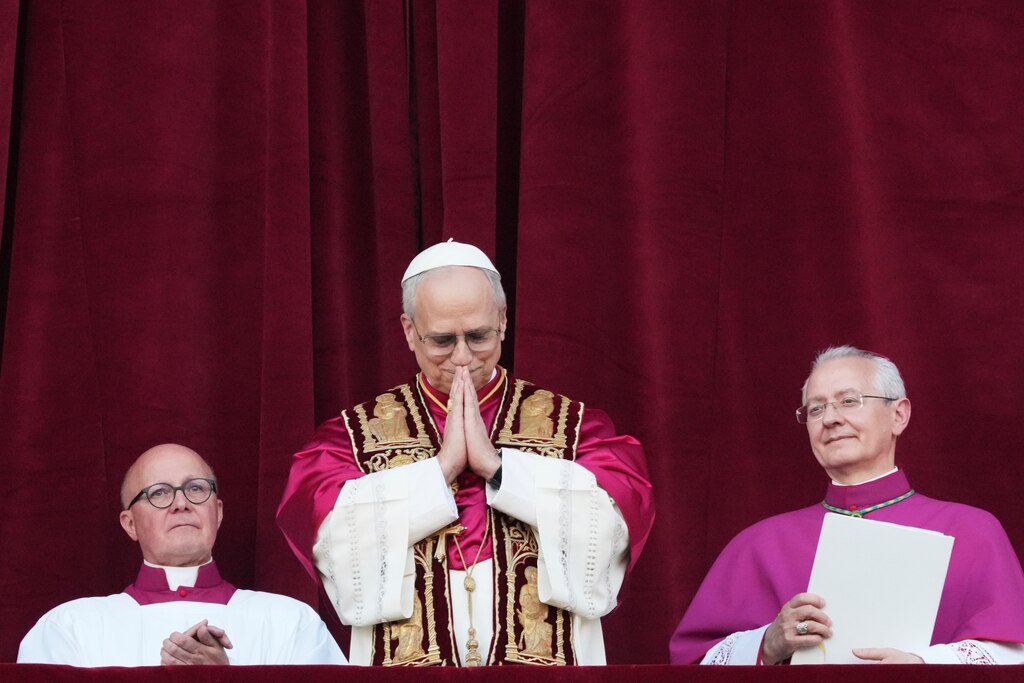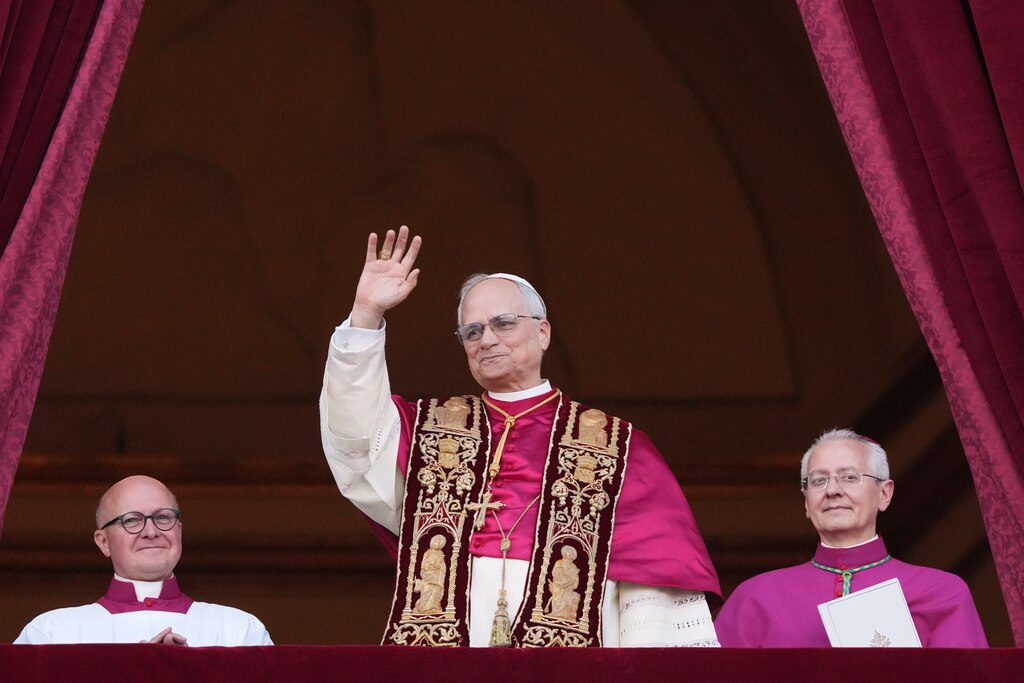VATICAN CITY — Pope Francis brought Robert Prevost to the Vatican in 2023 as the powerful head of the office that vets bishop nominations, one of the most important jobs in the Catholic Church. On Thursday, he ascended to become Pope Leo XIV — the first American pontiff.
Prevost, 69, had to overcome the taboo against a U.S. pope, given the geopolitical power already wielded by the United States in the secular sphere.
The Chicago native is also a Peruvian citizen and lived for years in Peru, first as a missionary and then as an archbishop.
He had prominence going into the conclave that few other cardinals have.
The Baltimore Banner thanks its sponsors. Become one.
Prevost was twice elected prior general, or top leader, of the Augustinians, the 13th century religious order founded by St. Augustine. Francis clearly had an eye on him for years, moving him from the Augustinian leadership back to Peru in 2014 to serve as the administrator and later archbishop of Chiclayo.
He remained in that position, acquiring Peruvian citizenship in 2015, until Francis brought him to Rome in 2023 to assume the presidency of the Pontifical Commission for Latin America. In that job he would have kept in regular contact with the Catholic hierarchy in the part of the world that counts the most Catholics.
Ever since arriving in Rome, Prevost has kept a low public profile, but he was well known to the men who count.
Significantly, he presided over one of the most revolutionary reforms Francis made, when he added three women to the voting bloc that decides which bishop nominations to forward to the pope. In early 2025, Francis again showed his esteem by appointing Prevost to the most senior rank of cardinals.
The bells of the cathedral in Peru’s capital of Lima tolled after Prevost’s election was announced. People outside the church expressed their desire for a papal visit at one point.
The Baltimore Banner thanks its sponsors. Become one.
“For us Peruvians, it is a source of pride that this is a pope who represents our country,” said elementary school teacher Isabel Panez, who happened to be near the cathedral when the news was announced. “We would like him to visit us here in Peru.”
The Rev. Fidel Purisaca Vigil, the communications director for Prevost’s old diocese in Chiclayo, remembers the cardinal rising each day and having breakfast with his fellow priests after saying his prayers.
“No matter how many problems he has, he maintains good humor and joy,” Purisaca said in an email.
An Augustinian pope
Vatican watchers said Prevost’s decision to name himself Leo was particularly significant given the previous Leo’s legacy of social justice and reform, suggesting continuity with some of Francis’ chief concerns.
“I think this pope is saying something about social justice by choosing this name, that it is going to be a priority. He is continuing a lot of Francis’ ministry,’’ said Natalia Imperatori-Lee, the chair of religious studies at Manhattan University in the Bronx.
The Baltimore Banner thanks its sponsors. Become one.
The new pope was formerly the prior general, or leader, of the Order of St. Augustine, which was formed in the 13th century as a community of “mendicant” friars — dedicated to poverty, service and evangelization. There have been six previous Augustinian popes.
The requirements and ethos of the order are traced to the fifth century St. Augustine of Hippo, one of the theological and devotional giants of early Christianity.
The Order of St. Augustine has a presence in about 50 countries, according to its website. Its ethos includes a contemplative spirituality, communal living and service to others. A core value in their rule is to “live together in harmony, being of one mind and one heart on the way to God.”
Prevost graduated from the Augustinian Villanova University, in suburban Philadelphia, and his election thrilled American students studying in Rome who happened to be in St. Peter’s Square to witness history.

“That’s the first American pope in history. How exciting!” said Alessandra Jarrett, a 21-year-old political science student at Rome’s John Cabot university. “Crazy that we’re able to be here and see it, and this was even our last day in school.”
The Baltimore Banner thanks its sponsors. Become one.
The past of Pope Leo
Francis moved Prevost from the Augustinian leadership back to Peru in 2014 to serve as the administrator and later archbishop of Chiclayo.
He remained in that position, acquiring Peruvian citizenship in 2015, until Francis brought him to Rome in 2023 to assume the presidency of the Pontifical Commission for Latin America. In that job he would have kept in regular contact with the Catholic hierarchy in the part of the world that counts the most Catholics and who clearly would have had a hand in his election.
Since arriving in Rome, Prevost has kept a low public profile but was well-known to the men who count.
Significantly, he presided over one of the most revolutionary reforms Francis made, when he added three women to the voting bloc that decides which bishop nominations to forward to the pope. In early 2025, Francis again showed his esteem by appointing Prevost to the most senior rank of cardinals.
The bells of the cathedral in Peru’s capital of Lima tolled after Prevost’s election was announced. People outside the church expressed their desire for a papal visit at one point.
The Baltimore Banner thanks its sponsors. Become one.
“For us Peruvians, it is a source of pride that this is a pope who represents our country,” said elementary school teacher Isabel Panez, who happened to be near the cathedral when the news was announced. “We would like him to visit us here in Peru.”
What’s in a name?
Pope Leo XIV ‘s choice of name signals a commitment to social justice that is very much in line with the late Pope Francis ' global ministry.
“I think a lot us had a question mark when they elected an American, and then he selected the name Pope Leo XIV,” said Natalia Imperatori-Lee, the chair of religious studies at Manhattan University. “It really means to me he will continue the work of Leo XIII.”
Pope Leo XIII, who was head of the Catholic Church from 1878 to 1903, laid the foundation for modern Catholic social thought, most famously with his 1891 encyclical Rerum Novarum, which addressed workers’ rights and capitalism at the dawn of the industrial age. He criticized both laissez-faire capitalism and state-centric socialism, giving shape to a distinctly Catholic vein of economic teaching.
The name “is a deep sign of commitment to social issues,” said Imperatori-Lee. “I think this (new) pope is saying something about social justice, by choosing this name, that it is going to be a priority. He is continuing a lot of Francis’ ministry.”
The Baltimore Banner thanks its sponsors. Become one.

Vatican spokesman Matteo Bruni confirmed that choice of the name Leo was a reference to Leo XIII and the social doctrine of the church, in particular the Rerum Novarum encyclical, considered the Catholic Church’s first social encyclical.
Another predecessor, Pope Leo I, was known for repelling the barbarian invasion of Atilla the Hun in 452 A.D. and dissuading him from sacking Rome through diplomacy, Italian Cardinal Mauro Piacenza told RAI Italian state TV. He also noted that Pope Leo XIII elevated the Sanctuary of Our Lady of the Rosary of Pompeii to a papal basilica in 1901.
Leo could also refer to Brother Leo, the 13th century friar who was a great companion of St. Francis of Assisi. By choosing such a name, the new pope could be signaling also a very strong continuity with Francis, who named himself after the saint.
For most of the Catholic Church’s first millennium, popes used their given names. The first exception was the 6th century Roman Mercurius, who had been named for a pagan god and chose the more appropriate name of John II.
The practice of adopting a new name became ingrained during the 11th century, a period of German popes who chose names of early church bishops out of “a desire to signify continuity,” according to Rev. Roberto Regoli, a historian at Rome’s Pontifical Gregorian University.
For many centuries, new popes tended to choose the name of the pope who had elevated them to cardinal. John was the most popular, chosen by 23 popes, followed by Benedict and Gregory, each with 16.
It was from the mid-20th century that new popes began to choose names signaling the aim of their papacy, Regoli said.
AP writers Colleen Barry and Vanessa Gera contributed to this story.




Comments
Welcome to The Banner's subscriber-only commenting community. Please review our community guidelines.